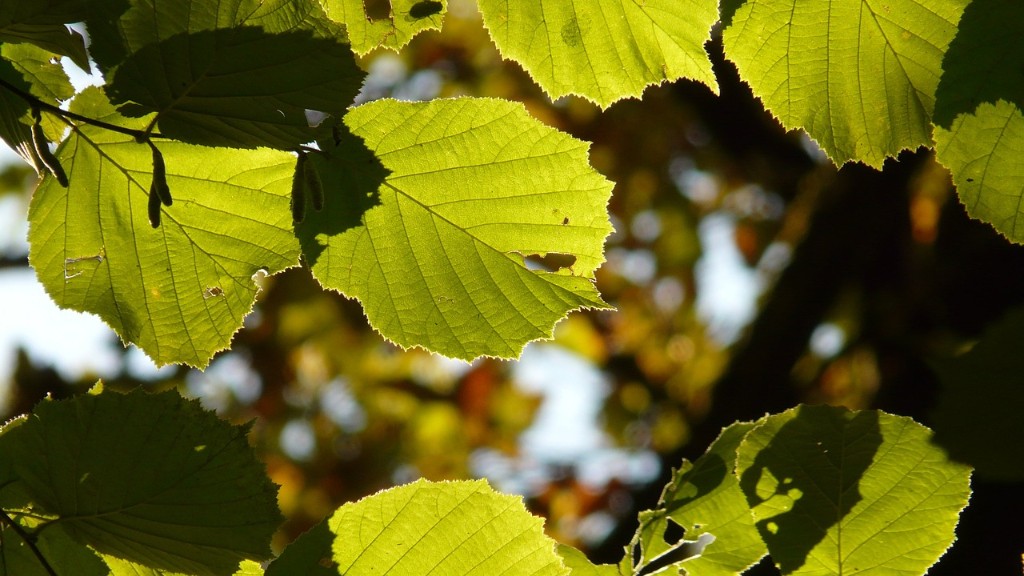Introduction
Palm trees are a symbol of tropical breezes, exotic vacations, and relaxation. They’re also a versatile and attractive addition to any home. But many people wonder if palms can survive indoors, when temperatures and light conditions vary from the perfect temperatures and lighting the palms find outdoors. In this article, we’ll take a look at what it takes for a palm tree to survive indoors, and explore the challenges associated with keeping a palm tree alive indoors.
Conditions for Survival
While many people assume that indoor palm trees will automatically die as soon as they enter their house, this isn’t always the case. If given the right conditions, some palm species can survive indoors all year long. For instance, smaller palms, such as parlor palms (the most popular type of palm tree indoors) and some varieties of date palm and bamboo palm, can survive indoors in moderate conditions. They’ll need some sunlight, and they’ll also need temperatures to stay above fifty-five degrees Fahrenheit.
To make sure your indoor palm tree is healthy, here are a few tips from experts. First, give your palm tree bright indirect sunlight and provide enough air circulation. Palms also need to be watered regularly, but make sure you let the soil dry out between waterings. Additionally, fertilize your palm tree once every month or two, and remove any dead or damaged leaves.
Main Challenges
The main challenge with keeping a palm tree alive indoors is dealing with dry air and inconsistent light. The lack of moist air and regular temperatures can cause the leaves of the palm tree to dehydrate, which can lead to browned, yellowed leaves. Additionally, the irregular light can also cause stunted growth and, in some cases, even death.
It’s also important to be aware of the fact that palm trees, whether indoors or outdoors, are prone to a wide range of pests and diseases. Palms are susceptible to spider mites, scale insects, and aphids, as well as diseases like bacterial leaf spot and root rot. Regularly checking your palm tree for pests and diseases can help prevent any major problems.
DIY Solutions
Once you’ve set up your indoor environment with the necessary conditions, there are a few DIY solutions you can try to make sure your palm tree is thriving. First, use a humidifier to increase the humidity in the room. This can help combat the dry air and make the environment more comfortable for your palm. Also, look into creating your own sun shelter. This can reduce light fluctuations and help ensure that your palm tree is getting enough light.
Expert Advice
Finally, if you’re struggling to keep your indoor palm alive, it’s a good idea to reach out to a professional for advice. Many experts can provide advice on how to set up the ideal indoor environment for your palm tree and help you troubleshoot any issues you might be having.
Managing Temperature
An important aspect of keeping a palm tree alive indoors is managing the temperature. Ideally, your indoor environment should have temperatures that mirror what a palm tree experiences in nature – between sixty-five and eighty degrees Fahrenheit. If you live in a colder climate, you may want to invest in a space heater to make sure your palm tree is getting the ideal temperatures.
Additionally, you should avoid placing your palm tree near sources of heat like radiators or heaters, as this can cause the leaves of your palm to dry out and die. Additionally, sudden shifts in temperature can cause shock to your palm tree and lead to root rot, so make sure you keep the temperature in your home consistent.
Managing Light
When it comes to light, palm trees require bright indirect light, which means keeping the tree out of direct sunlight, but still providing enough light for the tree to photosynthesize. Remember, though, that less is more – giving your palm too much light can cause the leaves to scorch. Additionally, sharp changes in light can shock the tree and lead to stunted growth or yellowing leaves.
Some people choose to supplement natural light by installing artificial lights, like LED lights, in their home. This can help replicate the lighting that a palm tree will find outdoors. Additionally, you can use sheer curtains or light-filtering shades to reduce direct sunlight and provide a more consistent source of light for your indoor palm.
Managing Water
Watering your indoor palm tree is an essential part of keeping it alive. Most palm trees prefer to be watered regularly, but with the soil allowed to dry a little bit between waterings. The key here is to avoid letting the soil get too dry and dehydrated, as this can cause browning or yellowing of the leaves.
Additionally, many palms prefer rainwater or distilled water to tap water, as tap water can contain large amounts of chlorine or other chemicals that can be toxic to your palm. You might also consider using a potting mixture with increased drainage, as this can help keep the root system of your palm tree healthy.
Fertilizing and Pest Control
Fertilizing and pest control are also important when it comes to keeping a palm tree alive indoors. Most indoor palms need to be fertilized once a month to ensure that the tree is receiving all of the minerals and other essential elements that it needs to live. Additionally, it’s important to regularly inspect your palm for any pests, as these can cause major damage to the leaves of your palm tree. If you do find pests, you’ll need to take action to get rid of them before they become a major problem.


